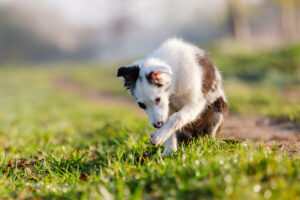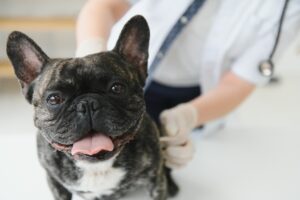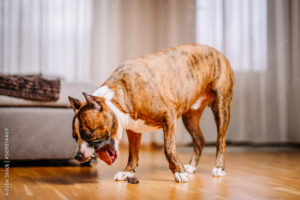Histiocytomas are among the most frequently diagnosed tumors in dogs. Research shows that approximately 116 to 337 dogs per 100,000 are diagnosed with histiocytomas each year, accounting for roughly 11% of all skin tumors in canines.
Knowing the causes and symptoms of histiocytomas is the first step to prevent it. Here’s everything you need to know about histiocytomas in dogs.
Understanding Histiocytomas in Dogs
Histiocytomas are common, non-cancerous skin tumors that appear suddenly in dogs.
These growths are typically small, under 2.5 cm, and usually resolve on their own within about three months. You’ll often spot them on areas like a dog’s nose, ears, or paws.
Unlike conditions such as histiocytosis, which can mimic cancer or resemble dog acne, histiocytomas are:
- Small and button-like
- Single bumps
- Reddish in color
- Hairless
- Raised but not filled with pus
Dogs between the ages of 1 and 3½ years are more prone to developing histiocytomas. Also, certain breeds—such as pit bulls, retrievers, bulldogs, and boxers—are more commonly affected.
Which Dog Breeds Are Prone to Histiocytoma?
The breeds that are prone the most from histiocytoma include:
- Boxers
- Boston Terriers
- English and French Bulldogs
- Labrador Retrievers
- Weimaraners
- Shar Peis
- Schnauzers
Symptoms of Histiocytomas in Dogs
Histiocytomas usually don’t cause severe symptoms in dogs. In most cases, pet owners first notice a small skin bump while petting or grooming their dog.
Some common signs of histiocytomas include:
- Hairless, raised, red bump on the skin
- Bleeding from the bump
- Itching or irritation
- Open sore with pus, especially if the bump becomes infected
- Swelling around the lump, indicating possible infection
What Causes Histiocytomas in Dogs?
The exact cause of histiocytomas in dogs isn’t fully understood. However, since these growths are made of immune cells, it’s believed that immune system dysfunction might play a significant role.
Additionally, genetics could be a factor, as certain dog breeds are more likely to develop histiocytomas.
Types of Histiocytosis in Dogs
A single histiocytoma bump is quite common and usually not something to worry about.
However, there are other forms of histiocytomas that can grow beyond a single bump, becoming a larger and potentially life-threatening issue.
These rare diseases fall under the term “histiocytosis” and can affect various parts of the body.
Cutaneous Histiocytosis
This rare disease causes multiple bumps to form deep under the skin, often beneath the fat layer. These lumps can cause discomfort, especially around the legs and hindquarters.
In some cases, the disease can spread to the face, making it hard for the dog to see or breathe properly.
Systemic Histiocytosis
Primarily affecting Bernese Mountain dogs, systemic histiocytosis causes waves of skin lesions that come and go, with each occurrence becoming more severe.
If untreated, it can spread throughout the body, even affecting internal organs.
Malignant Histiocytosis
Also commonly found in Bernese Mountain dogs, this type spreads rapidly to organs like the liver, lymph nodes, and lungs.
Malignant histiocytosis typically occurs in older dogs, over seven years of age and, sadly, can be fatal.
Each of these conditions requires immediate specialized treatment from a vet, especially If your dog’s histiocytoma appears unusual or worsens.
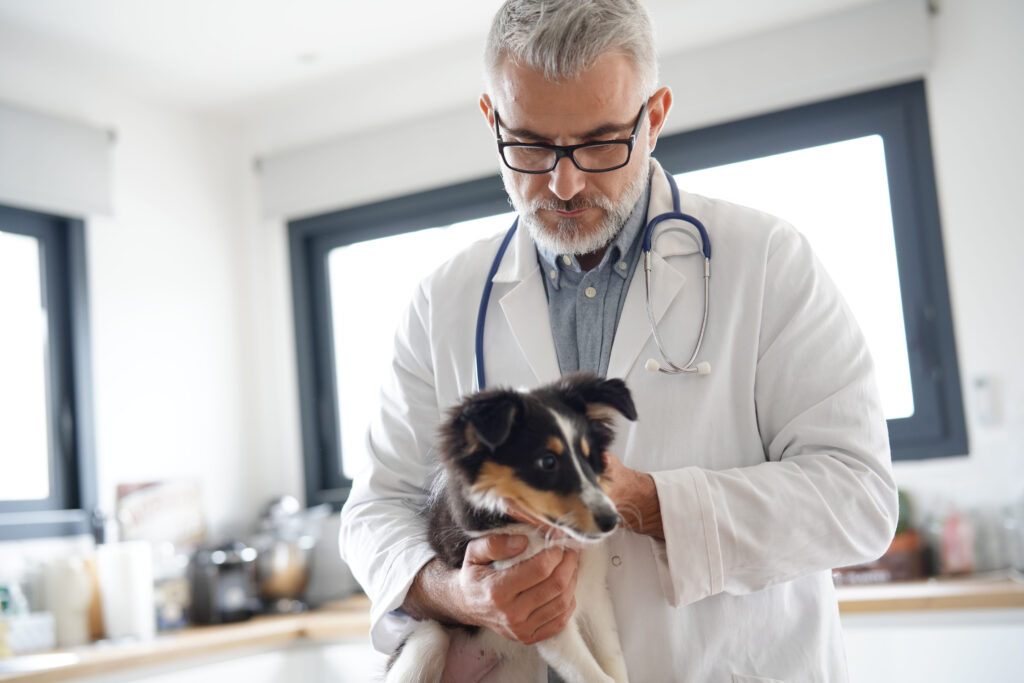
How Are Histiocytomas Diagnosed in Dogs?
If a vet suspects a dog has a cutaneous histiocytoma, they may recommend sampling the growth for further analysis. They may analyze the growth through needle aspiration, biopsy, or complete removal of the tumor.
The obtained cells undergo microscopic examination, a process known as cytology, which confirms whether it is indeed a histiocytoma.
The good news is that the majority of histiocytomas are benign and rarely turn malignant. Nonetheless, cytology is essential as it helps distinguish histiocytomas from other, less common inflammatory diseases that may require treatment.
If you or your vet suspect other conditions, the results from the aspirate or biopsy can help ease your worries.
Statistically, dogs are far more likely to have a benign histiocytoma than a more severe issue, such as histiocytosis or malignant histiocytic sarcoma.
Are Histiocytomas in Dogs Harmful?
In most cases, histiocytomas are benign and painless, often disappearing on their own within 2–3 months without treatment. But if you’re concerned about the appearance of the lump or if it’s causing discomfort, surgical removal is an option.
The main health concern isn’t the histiocytoma itself, but the risk of a secondary infection. If bacteria or debris enter the bump, it could lead to infection, which may cause your dog to become ill.
Keep an eye on your dog’s behavior. Scratching, licking, or biting at the bump could indicate infection. If the lump becomes open or warm to the touch, contact your vet for an examination.
How Are Histiocytomas Treated in Dogs?
In most cases, histiocytomas in dogs don’t need treatment, as they typically go away on their own within three months, thanks to their immune system.
However, if the histiocytoma is in a spot that experiences frequent contact, or if your dog keeps licking or scratching it, the bump might bleed and become infected.
This is especially common for histiocytomas on a dog’s paw. In such cases, a vet may prescribe topical or oral antibiotics like Animax® ointment or cephalexin, which generally cost around $10–$15.
If the lump doesn’t go away or is making your dog uncomfortable, surgical removal might be necessary. The cost of surgery can range from $300–$500, depending on where you live, and if a biopsy is needed, additional costs could be between $200–$400.
Recovery from Dog Histiocytoma
Most dogs recover smoothly from histiocytomas, with the growths usually disappearing on their own within three months.
For dogs that undergo surgery, recovery typically lasts around two weeks. During this time, an Elizabethan collar is recommended to prevent licking or chewing at the surgical site.
It’s important to avoid bathing or grooming your dog during the recovery period. After 14 days, the sutures can be removed, and your dog can return to their normal activities.
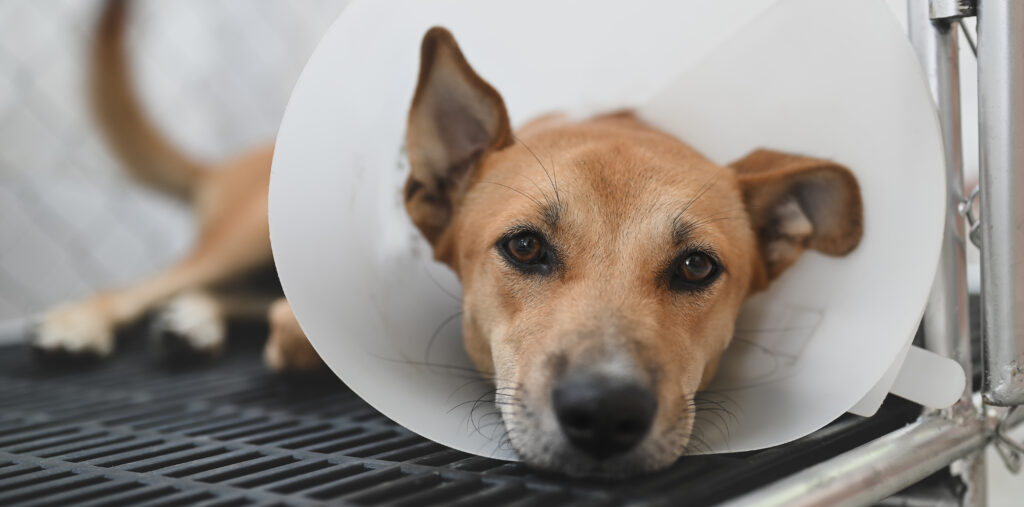
Can You Prevent Histiocytomas in Dogs?
Unfortunately, histiocytomas cannot be prevented, as the exact cause behind their development is still unknown. However, the good news is that they are typically benign and resolve on their own, rarely causing serious issues for your dog.
Regular check-ups and monitoring any new lumps can help ensure early detection and appropriate care if needed.
Why Truffle Paws Is Best for Your Dog’s Health Coverage
At Truffle Paws, we recognize that ensuring your dog’s health is your top concern, particularly when faced with unexpected issues like histiocytomas.
These common yet benign skin tumors can get you worried, but our insurance plans provides peace of mind by covering necessary vet care.
Focus on what truly matters—your dog’s health and happiness.
To discover more about our comprehensive pet insurance plans and how we can support your furry friend, visit our website or reach out to our customer service team today.



